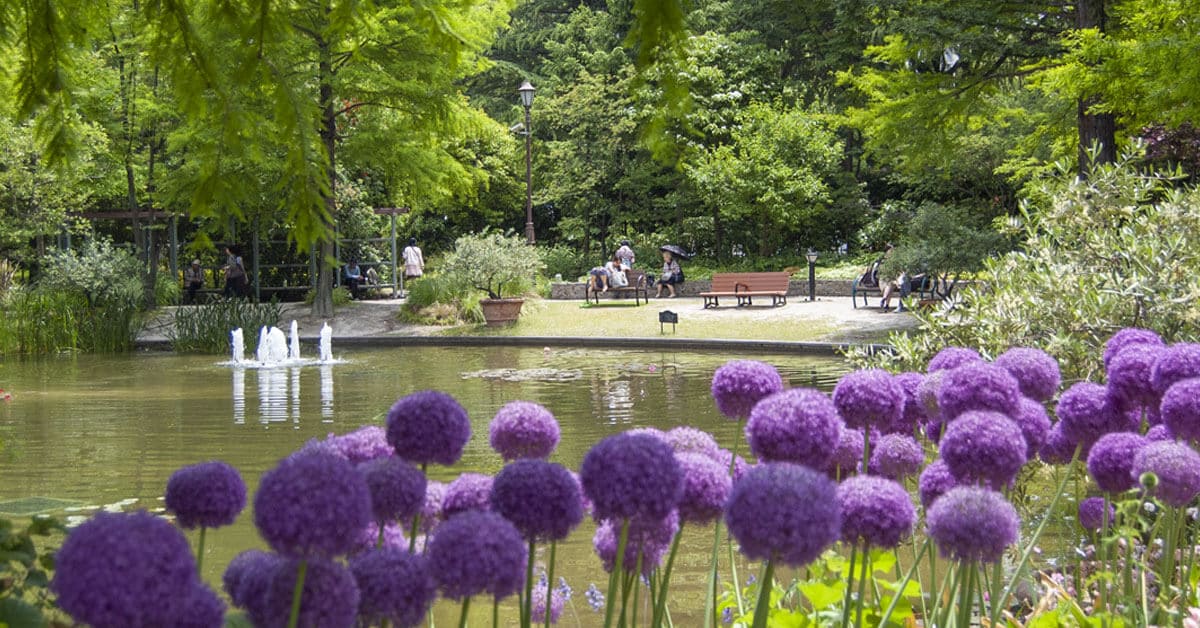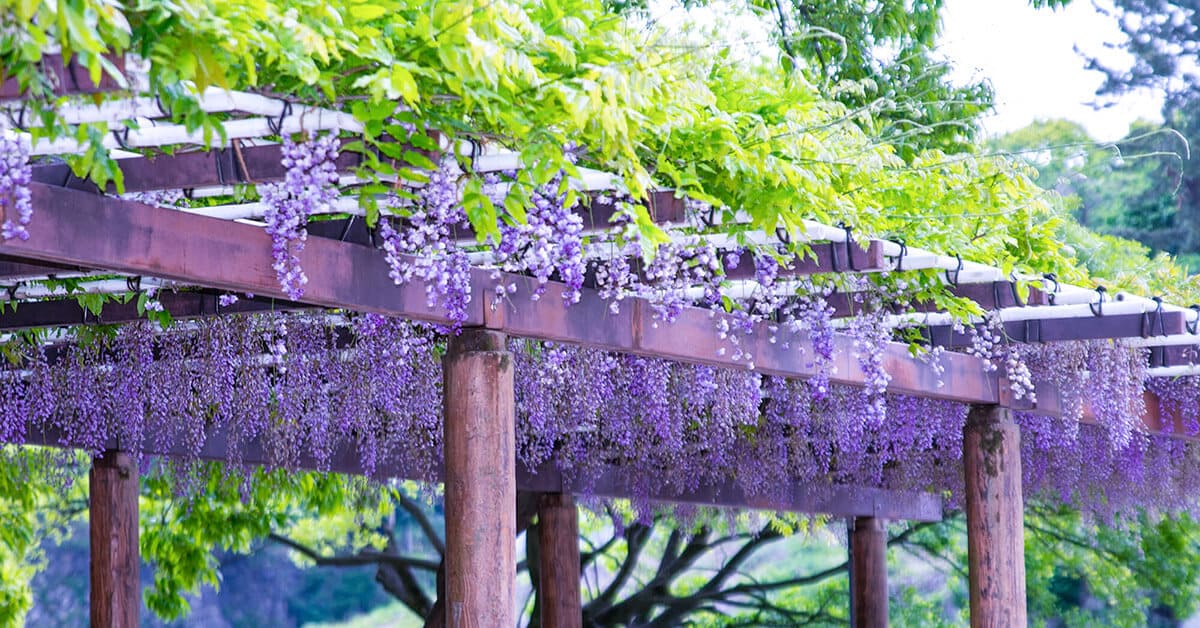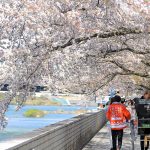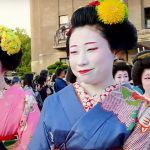Nagoya is known as one of largest industrial cities in the country, but it is also a very green city. Its streets are lined with trees and shrubs and there are parks of various sizes dotted about town whether it’s Nagoya’s impressive Meijo Park or a tiny little patch of grass acting as a playground for the local children. Wherever you go, you’ll see some form of nature in the otherwise concrete jungle.
And sometimes you need a little break from the city; a place with fresh air, a place for meditation and relaxation. Shirotori Garden is a traditional Japanese garden that offers just that, an oasis of tranquility and an escape from city life.
Article Contents
Amble Through The Park’s History

Shirotori Garden was originally planned to be renovated from an old lumberyard into a swan park (hence the name “Shirotori”, meaning white bird or swan in English) before it was decided that it would be entered into the World Design Expo of 1989 instead. The renovations for which lasted eight years between 1983 and 1991.
For that it was created as a “Japanese garden” pavilion, and after the Expo closed, the renovation work continued, thus reconverting it to the garden as it is today. The garden finally opened its doors to the public in 1991.
Reflecting Nagoya’s Nature In Its Waters

Shirotori Garden is about 3.7 hectares in total, with a path that runs along the banks of streams and ponds.
As with many Japanese gardens, there are several elements representative of nature and the geography of its surroundings. Shirotori Garden is meant to represent the natural landscape surrounding Nagoya and Aichi prefecture with a strong focus on water as its main theme.
Called “The history of water”, the main pond in the garden represents Ise Bay, while the great hill in the southwest corner of the garden represents Mount Ontake, with the current that flows down from atop the hill being the mighty Kiso River.
In the center of the garden is the Seiu-tei, a complex of rooms for the tea ceremony. Seiu-tei was designed to recreate the image of an elegant white swan that descends to rest its wings, again adding to the name “Shirotori”. The tea rooms, available for public use, harmonize perfectly with the natural surroundings. Sit and sip a green tea and indulge in some traditional Japanese sweets while enjoying the garden’s landscape.

Shioiri-tei is a restaurant/coffee shop from which you can observe the small garden called “Shioiri-no-niwa”. This garden was designed to be able to enjoy the changing landscape with the sunlight and changing flow of water or the “tide”, from which the restaurant is named.
There are three “expressions” that this garden creates with its waters. First is the water that produces an ever-changing scenery with its silently ebbing waves. Second is the fountain that expresses the spray of crashing waves on the shore. Last is the water that expresses the tides that recede on the sandy beach and along the rocks.

In addition to hills, bamboo forests and ponds, the scenery is complete with waterfalls and huge rocks, evoking a mountain landscape from where the clear stream rushes to the bottom.
Experience The Changes Through the 4 Seasons of Shirotori
The landscape of Shirotori Garden changes with the seasons and there are plenty of events organized to allow the full appreciation of the beautiful scenery.

In the later winter months of January and February you can contemplate the garden in a different way as it’s sometimes covered in bright white snow.
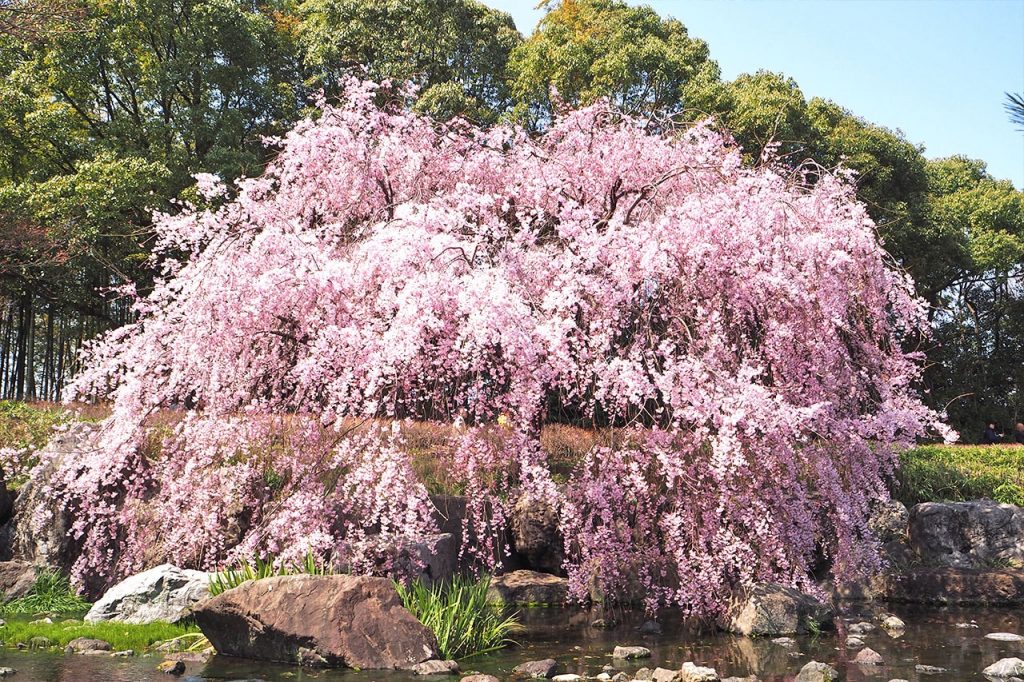
As spring starts in March and April, you can admire the cherry trees (Sakura) in bloom such as in Hanami events that are popular amongst all Japanese.

Summer offers the garden’s visitors to enjoy the hydrangea festivals. Thousands of hydrangeas of blue, lilac, rose and white bloom creating a landscape of beautiful pastel colors. It is at this time when the tea ceremonies directed towards foreigners are held, with explanations in English. At the same time they also offer a garden guide in English.
In the midst of summer (July-August), water lilies bloom in the ponds.
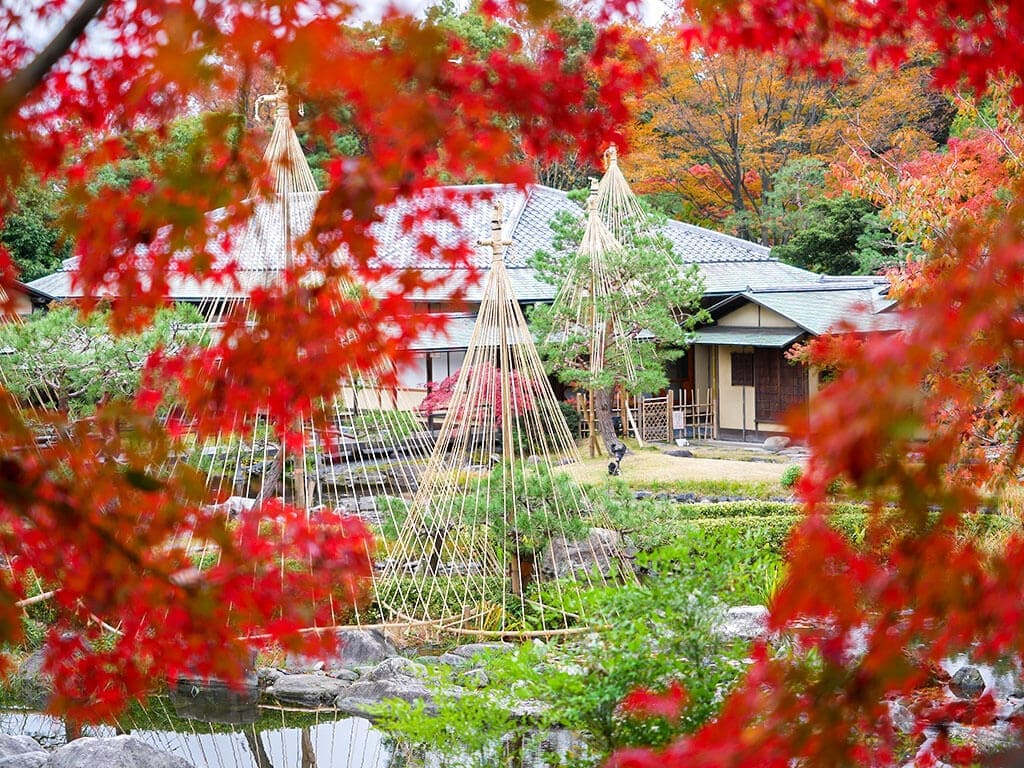
As summer ends and autumn begins, there are a number of festivals and events held under the night sky such as the moon viewing events in September and October. Later on in the season the autumn leaves will change to a brilliant combination of reds, yellows and oranges, completely changing the garden’s scenery.
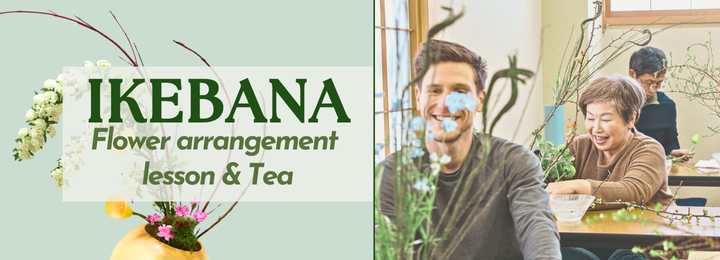
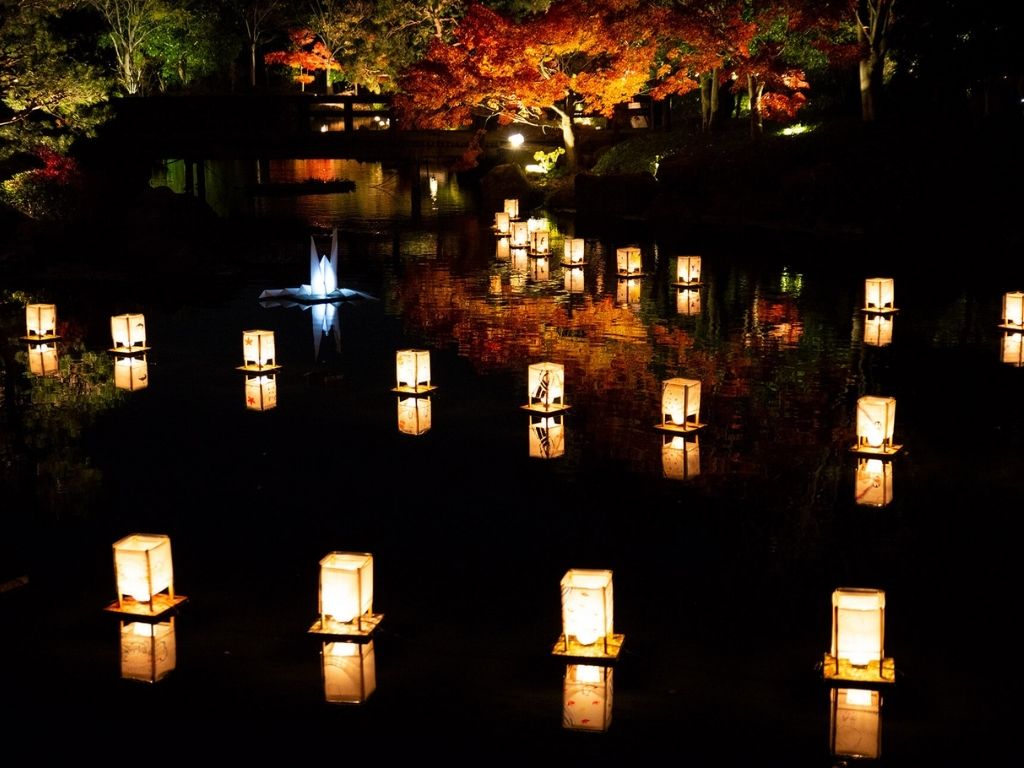
In December, people celebrate the festival of the art of light, where you can visit the park at night and appreciate the illumination and the nocturnal landscape of the garden.
A Garden For All

Many gardens can be a challenge for those with a walking impediment or baby stroller with lots of uneven steps and areas that require walking up steep hills, but Shirotori Garden has a series of flat paths that lead through pine trees and bridges that surround the ponds.
80% of the trails are fully accessible. At the entrance they also offer a map describing the routes without stairs that are suitable for walking with a wheelchair or baby cart.
Most roads are on dry land and the bridges are easy to cross, but some of the gravelier areas may require a little help for manual wheelchairs. The Shioiri-tei, the tea salon complex, is also easily accessible.
The Best Time To Visit Shirotori Garden
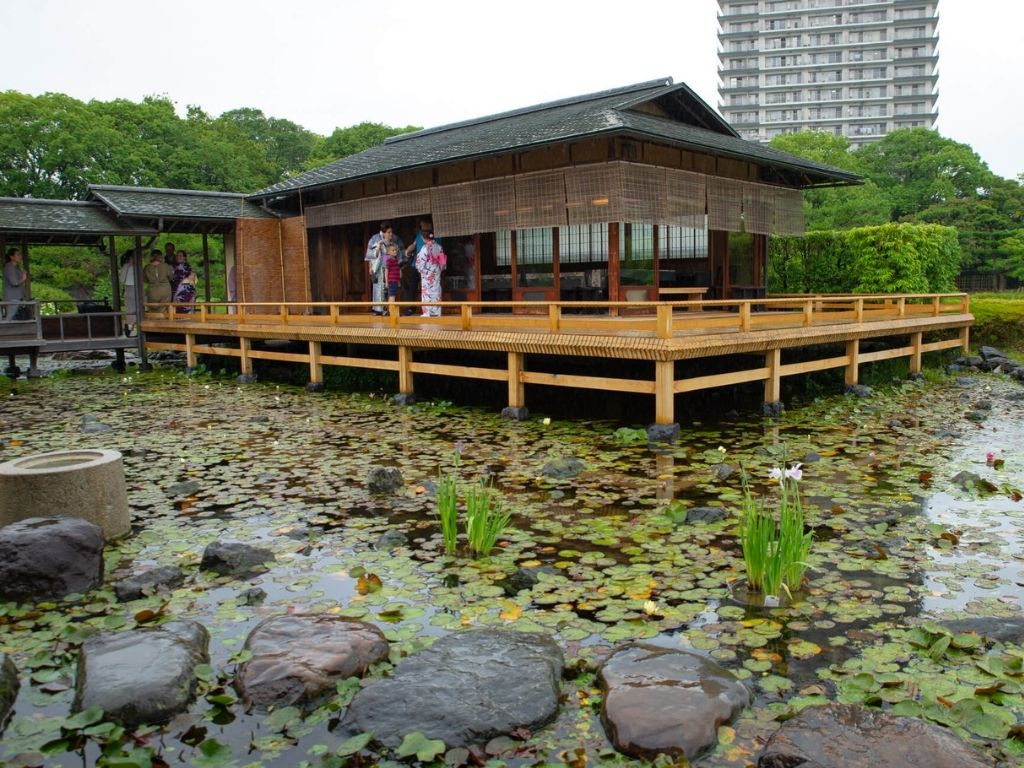
You can visit the garden at any time of the year but if you are interested in joining the tea ceremonies or a guided tour, we would recommend you go in July as they offer both in English allowing you to fully enjoy the experience.
However, if you want to get a good glimpse of the changing of the leaves, spring and autumn are the best times to see how beautiful the garden can be.
If you are visiting the garden you should take the opportunity to also visit the famous Atsuta Jingu Shrine, which is just a ten-minute walk from the park.
To reserve the tea ceremony, consult prices and schedules on its website.
Shiotori Garden (白鳥庭園)
Entry Fee: Adults: 300 yen, Senior Citizens: 100 yen, Junior High School Students and under: free
Opening Hours: 9:00 – 17:00 (last admissions 16:30. Closed Mondays)
Access: Take the Meijo subway line to Jingu Nishi station. It is a ten-minute walk from exit number 4.
Address: 2-5 Atsuta-nishimachi, Atsuta Ward, Nagoya
Website | Google Maps
Did you enjoy this article?
Be sure to follow us on Facebook for new articles every week, and see our Instagram for pictures and stories about Nagoya!
Share your comments below or message us using any of our SNS or send us an email.
Tag us
Share your shots of Shirotori Garden or any other park or garden in Nagoya you’ve been to on social media and make sure to tag us on with #nagoyaisnotboring you might even be featured on our social media account!

